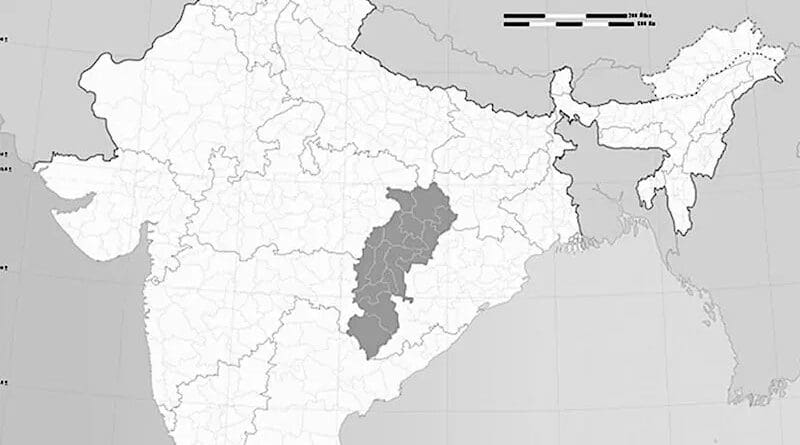Maoist Attack In Chhattisgarh: The Devil Is In The Details – Analysis
In the evening of 22 March, 17 security personnel were killed in an attack carried out by the Communist Party of India-Maoist (CPI-Maoist) in Chhattisgarh’s Sukma district. 14 more personnel were injured, two of them, critically. In the midst ofthe nation-wide chaos wreaked by COVID-19, news of this attack barely lasted for a few hours on the websites of prominent newspapers.
While the Chhattisgarh police blamed the casualties on a deep penetrating mission carried out by the forces against the extremists, India’s Prime Minister, Narendra Modi, tweeted condemning the attack. “Their valour will never be forgotten,” he wrote. The Ministry of Home Affairs did not issue a statement.
The incident, it appears, was a ‘routine’ and ‘forgettable’ chapter in the country’s continued fight against left-wing extremism. Was it? Or do the available details of the attack reveal some disturbing truths about how security planners are trying to deal with India’s left wing extremist (LWE) problem, which has been variously described as teetering in its dying phase.
The Incident
While several accounts of the attack have emerged, common facts in media reports comprise the following:
The incident occurred after a joint operation of about 450 personnel belonging to the District Reserve Guard (DRG), the Special Task Force (STF) and the Commando Battalion for Resolute Action (COBRA) of the Central Reserve Police Force (CRPF) in Sukma’s Kasalpad area. In the morning of that day, all these personnel had been mobilised from their camps at Chintagufa, Burkapal and Timelwada. Information regarding the congregation of large numbers of Maoists in the forests of Kasalpad towards Elmagunda had been received. The plan was to take the extremists by surprise. However, it turned out that the Maoists were aware of the force movement.
The forces were allowed free access deep into the forested area. Upon not finding Maoists, they began returning in two groups to their respective camps. At about 1400 hrs, the smaller group of 100 personnel, mostly comprising DRG and STF personnel who were headed to their Burkapal camp, was ambushed by about 350 Maoists who had been strategically positioned on a hillock. After two hours of exchange of fire, the Maoists (whose casualty numbers are unknown so far), managed to loot 15 weapons including 12 AK-47 rifles from the dead security personnel.
Facts within Facts
While such meticulously organised ambushes have been the hallmark of LWE warfare in India, within the above narration, hidden are some facts that highlight several disturbing issues regarding ‘a decade and half’-long security force operations against the extremists. It is important that at least three of these are brought to light.
Poor Intelligence: The best of security operations can go awry without adequately vetted intelligence. It is not known whether the intelligence received regarding the congregation of Maoists was purely technical, human, or a mix of both. But what is almost certain that it had not been vetted by the higher ups. The operation did not seem to even have a Plan B for back up. Blaming field officials for command and control lapses has been a trend of the previous investigations into similar failed operations. The higher ups hardly share the blame and often go scot free. It is not known whether the same will prevail this time too.
Were the Dead ‘Expendable’?: Of those killed, 12 were from the DRG and five from the STF. DRG personnel are predominantly former Maoists and the disbanded Salwa Judum cadres who are credited for a number of successes due to their knowledge of local terrain and CPI-Maoist tactics. Media reports have suggested that many of the killed bled to death as no evacuation support arrived. It is also difficult to surmise that the second group comprising 350 forces including COBRA personnel, who were possibly aware of the ongoing ambush, could not come to the rescue. Investigations should reveal whether the COBRA and STF personnel simply chose safety over protecting the lives of the ‘lesser mortals’ among the security forces.
Broad Daylight Operation: In 2014, following a similar ambush in which 14 CRPF personnel had been killed in Chhattisgarh, the then Director General of the Force, RC Tayal, had told the media, that “There is no meaning in conducting operations by announcing our presence and moving in broad day light in areas dominated by the Maoists. We have decided that we will carry out our movements by night now onwards.” The area where the 22 March ambush took place is known for being extremist dominated. It appears that the 2014 decision has been abandoned to pursue poorly planned daylight operations without backup—which provides a distinct advantage to the extremists.
Looking Ahead
This major attack, in terms of personnel killed and arms looted by the extremists, will act as a morale booster for the CPI-Maoist. They have been successful in adding a significant number of sophisticated weapons to their arsenal. Moreover, they also have been able to demoralise the security forces and possibly stall operations for a while. Speaking at the Intelligence Bureau’s 32nd Endowment Lecture in December 2019, India’s Home Minister, Amit Shah, had set a timeline of five years to wipe out LWE. Some deep introspection regarding planning of operations and strategy of the security forces would be required if this goal is to be achieved.
*Dr Bibhu Prasad Routray is the Director of Mantraya, and a Visiting Fellow and columnist with IPCS, where this article was also published.

